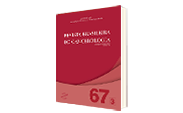Analysis of The Reasons for Unsatisfactory Cervical Histopathological Exams in the Unified Health System, Brazil, 2014 to 2017
DOI:
https://doi.org/10.32635/2176-9745.RBC.2021v67n3.1299Keywords:
Uterine Cervical Neoplasms, Unified Health System, Teste de Papanicolaou, Mass Screening, Pathology, ClinicalAbstract
Introduction: Cervical cancer is still an important public health problem in Brazil and worldwide. The quality of screening and diagnostic confirmation tests are essential for cancer control actions to achieve an effective impact on mortality. Objective: The aim of this study was to analyze the information registered in the description field of the motives for the unsatisfactoriness of the histopathological exams of the cervix. Method: Descriptive study using data of the Cancer Information System (SISCAN) of women who underwent histopathological examination of the cervix in the Unified Health System (SUS) in the period from 2014 to 2017. 1,236 histopathological examinations of the cervix were analyzed. The reasons for unsatisfactoriness specified in the description field were analyzed and reclassified and, when relevant, were reassigned to the existing fields for satisfactory exams. Results: 262 exams (21.2%) were incorrectly classified as ‘unsatisfactory’, in which 11.25% were reclassified as a benign lesion, 5.91% as a high-grade lesion, 1.46% as carcinoma, 0.24% as adenocarcinoma and 0.24% as adenocarcinoma in situ. Conclusion: The study showed a significant percentage of errors in reports classified as unsatisfactory in SUS, pointing out the need to train professionals who issue histopathological reports in order to avoid diagnostic errors.





